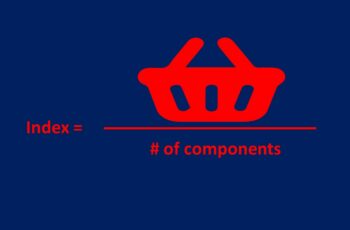Trend is your friend. If you accept this friendship, you will profit. However, if you reject, you will wipe out your account.
This saying has become popular because it is more likely for the current trend to continue than reverse.
Often, behind the reversal of a new trend is a few fundamental reasons. For example, an economic recession can create a new downtrend and economic recovery a new uptrend. Fundamental outcomes do change from positive to negative or vice versa every year or month. It persists for a long time. So, it is true that trend is your friend.
Moreover, you can only profit if there is a trend (and should become its friend), and nobody knows when it ends, which I explain in the following.
What Is a Trend?
In short, a trend is the average price movement direction.
We have a dedicated article about the trend which is What Is Trend in Finance? How to Determine a Trend? If you want to learn more, go and read it.
Generally, there are types of trends:
- Uptrend – when the average price goes up;
- Downtrend – when the average price goes down; and
- No trend – when the average price goes sideways.
When someone tells you to trade a trend, he means to go long if the trend is bullish and go short if it is in a downtrend. And more importantly, do not trade when there is no trend.
You Only Profit If There Is a Trend
Following a trend is crucial. In fact, a trader makes money only if she trades trends. In other words, a trader makes money if he becomes a friend of the trend.
Look at the following image. Will you be able to profit from selling and buying?
No, you will not profit when the price goes sideways.
But, what about when there is a bullish trend?
Will you profit if you buy?
Yes. You will profit if you buy in an uptrend and if sell in a downtrend.
Nobody Knows When a Trend Ends
Because nobody knows when the current trend ends you must go with trends.
A trader’s job is to buy low and sell high is a well-known saying that new traders misunderstand. It does not mean to catch tops and bottoms. In fact, trying to catch tops and bottoms often leads to wiping out traders’ accounts because nobody can identify the exact tops and bottoms.
A better way to convey the message of buying low and selling high is to:
- Buy low at the start of a new uptrend that is confirmed.
- Sell high at the start of a new downtrend that is confirmed.
Before opening a new position make sure that trend is your friend.
Even if you see reversal chart patterns, confirm these patterns with technical indicators, candlesticks, and fundamentals. In this case, even if you enter at the start of a new trend, you are with the trend because a new trend establishment is confirmed.





